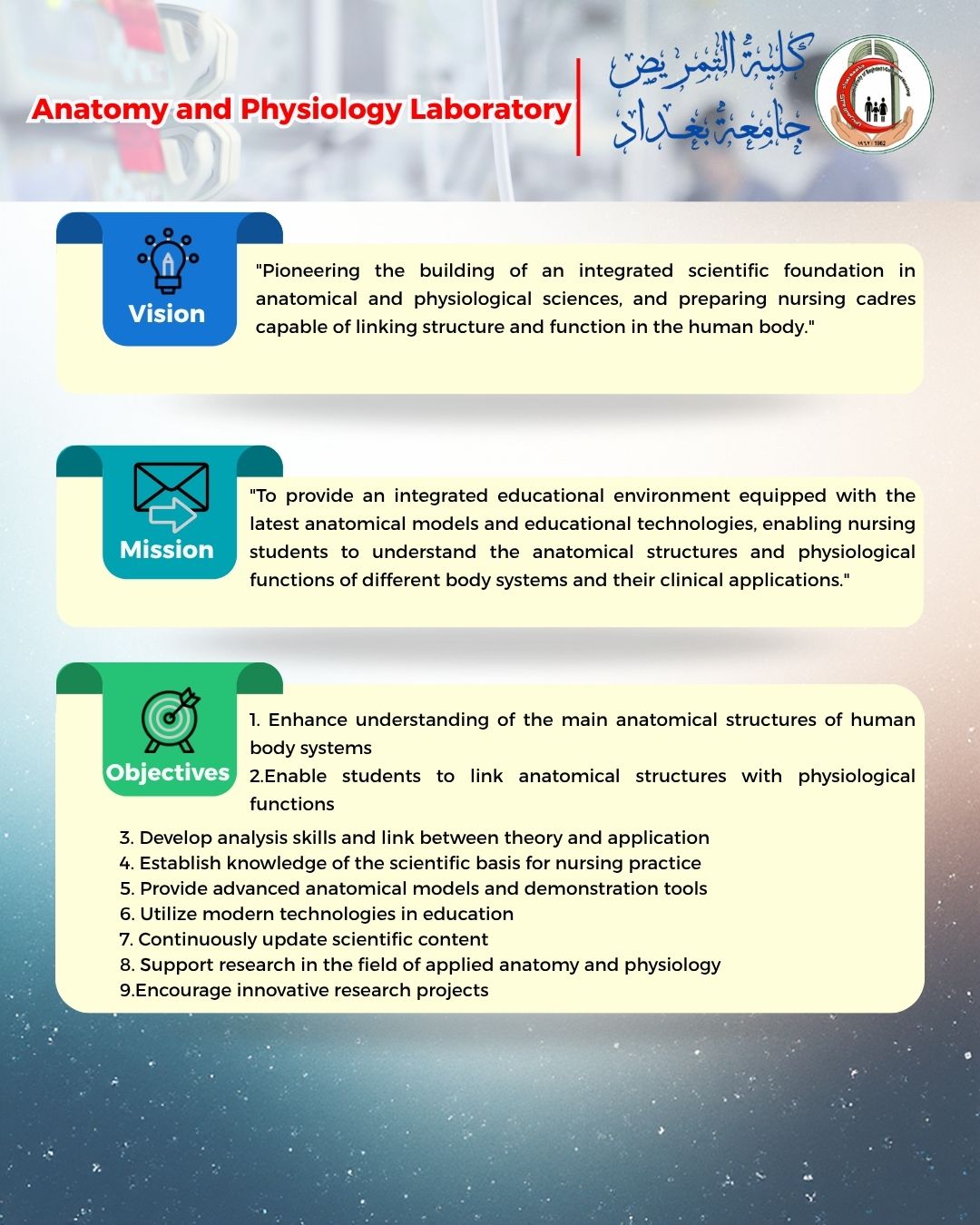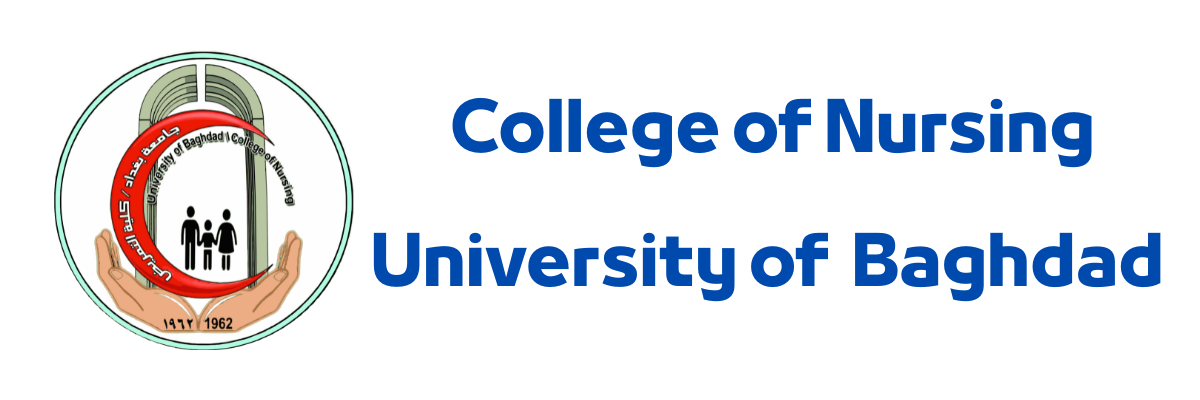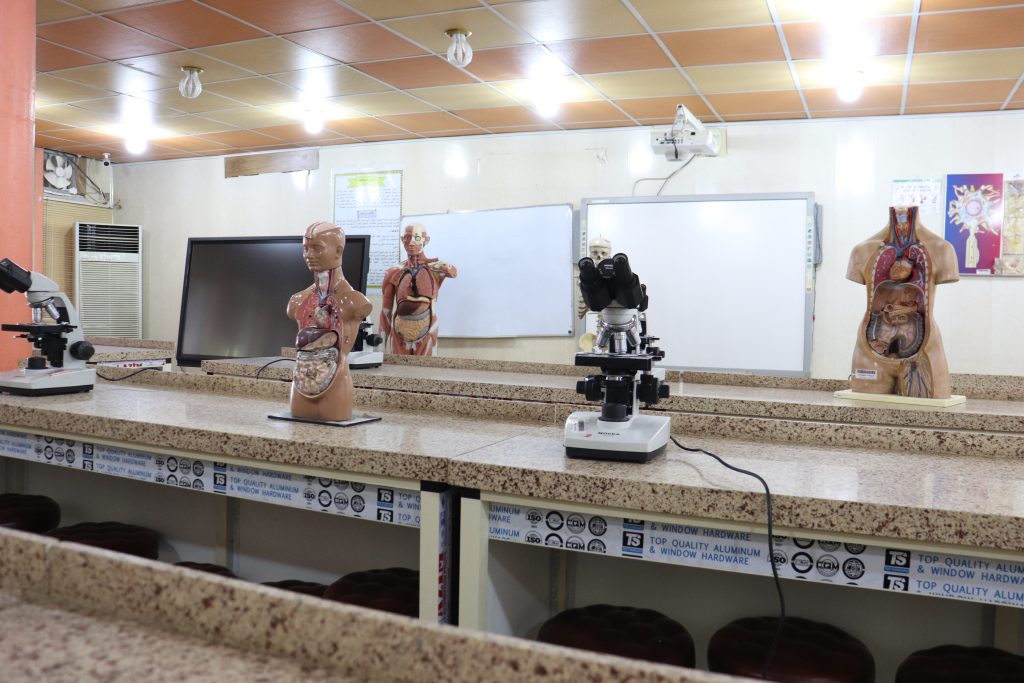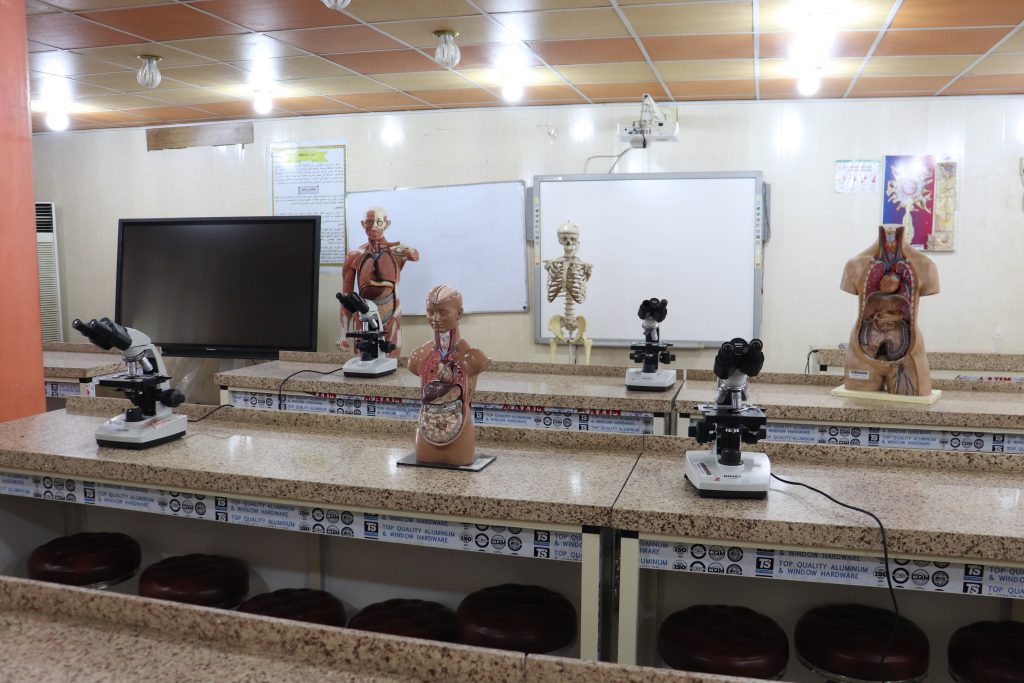Introduction to the laboratory
The Faculty of Nursing is one of the applied science faculties that relies heavily on practical laboratories to qualify and prepare students to acquire nursing skills before applying them in real life. Within hospitals and health institutions, the theoretical aspect is integrated with the practical aspect.
Experience has shown that good preparation of nursing students in practical laboratories helps bridge the gap between theory and practice and boosts students’ self-confidence.
There is no doubt that providing an environment that mimics that of hospitals and health institutions by ensuring that laboratories are equipped in a manner that closely resembles those institutions will contribute to raising the professional and technical performance of nursing students. This is what drives the college to strive to keep up with everything that is new and appropriate for the times.
Vision, Mission, and Objective

Photos of the anatomy and physiology laboratory
General objective
- Preparing nurses who are scientifically and practically qualified to perform their duties in hospitals after graduation.
Linking theory with practice and activating their ability to draw conclusions and discuss results.
Identifying the different organs of the body, the structure of each organ, and the vital functions they perform in the human body using models, plastic dolls, and other means of illustration, such as the skeletal system, muscular system, cardiovascular system, digestive system, respiratory system, urinary system, reproductive system, and sensory organs.
Learn how to perform blood tests (complete blood count, blood types, hemoglobin measurement, and packed cell volume measurement) and conducting urine tests and measuring blood pressure, in addition to teaching students how to perform an electrocardiogram using an ECG machine, its uses, and its importance.
Vision for the Anatomy and Physiology Laboratory
- Assist nursing students in learning about anatomy and physiology and applying this knowledge in nursing practice.
Introduce students to the most important recent developments in anatomy and physiology in terms of modern techniques in diagnosis and laboratory tests, such as blood typing, differential diagnosis of blood cells, and other laboratory tests.
To offer advanced laboratory study programs in the field of anatomy and physiology and to graduate students who are able to provide society with scientific expertise and specialized cadres trained in modern scientific techniques and qualified scientifically and practically in this field.
Message from the Anatomy and Physiology Laboratory
This laboratory is one of the most important laboratories for nursing students, as it helps students understand anatomy and physiology from a scientific perspective, helping them identify the different organs of the body that make up the various systems, in addition to conducting some of the necessary tests related to the work of university nurses in hospitals.


